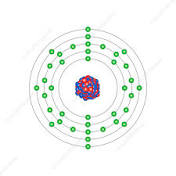Strontium dexa scan affect

There is a Strontium dexa scan connection and if you are taking strontium in any form the person reading your dexa scan needs to know that so they make the appropriate adjustment in reading your dexa scan.
Dexa scans are usually read based on calcium based results and because strontium is a denser mineral, the dexa results will be affected. If you have been taking strontium, it will be present in your bones. Since this element is heavier than calcium it will change the results of your dexa scan. If the person reading your test does not make adjustments for your Strontium dexa scan, they could give a false reading on how dense you bones really are.
You do not want this. You want accurate reading. So here is my suggestion if you are taking strontium supplement in any form.. Take these Strontium dexa scan actions before you have your test.
When you go for your next dexa scan, be sure to tell the technician that you have been taking Strontium and research has shown that this supplement affects the way a dexa scans should be read/interpreted - that if there is no adjustment in the interpretation, bone mineral density can be seen as artificially high.
How to get an accurate dexa reading after taking strontium:
When you go for your test, be sure to tell the clinician that you have been taking strontium and that there is a strong strotium dexa scan effect. Then give the clinician a paper with:
- your name
- how long you have been taking Strontium
- your daily dose. You can figure this out from your strontium bottle. If you are taking it twice a day, just double the amount shown on the label.
Then attach these two abstracts to your information:
1. Journal Clinical Densitom. 1999 Winter;2(4):371-9. Influence of strontium on bone mineral density and bone mineral content measurements by dual X-ray absorptiometry. Department of Clinical Physiology, Hillerod Hospital, Hillerod, Denmark. spni@fa.dk
"The presence of Sr in bone influences bone mineral density (BMD) and content (BMC) measurements by dual-energy X-ray absorptiometry (DXA). This interaction is of interest, since strontium ranelate (S12911) demonstrated positive effects on bone metabolism in various animal models of osteoporosis, and is currently being evaluated for treatment of post menopausal osteoporosis. The present in vitro study aimed to determine adjustment factors for DXA measurements of BMC and BMD at different Sr concentrations in order to estimate the corresponding values that would have been measured without Sr. A series of mixtures of Ca and Sr hydroxyapatites were prepared, with biologically relevant Sr/Ca ratios ranging from 0 to 3.5 mol/mol%, and a constant total concentration of divalent cations (145 mmol). The mixtures were conditioned in plastic dishes 4.5 cm in diameter, to obtain an a real density close to the human vertebral mineral density of 0.7-1.1 g/cm(2). DXA measurements of the mixtures were made with a wide range of different instruments and various acquisition modes. A direct linear relationship (r(2) > 0.99) was found between strontium content and overestimation of BMD and BMC. There were no significant differences in adjustment factors for BMC or BMD between the different machines or acquisition modes, and the presence of Sr in the water bath used to mimic soft tissues did not affect the accuracy and precision of the method. This demonstrates that reliable DXA determinations of BMD may be carried out in the presence of Sr, and may be interpreted in terms of calcium hydroxyapatite equivalent if the bone Sr content of the measured bone is known. The same adjustment factor (10% overestimation for 1 mol/mol% Sr) can be used for all presently available types of instrument and acquisition modes."
2. Bone. 1997 Jan;20(1):47-54. Effects of strontium ions on growth and dissolution of hydroxyapatite and on bone mineral detection.by Christoffersen J, Christoffersen MR, Kolthoff N, Barenholdt O. Institute for Medical Biochemistry and Genetics, Faculty of Health Sciences, University of Copenhagen, Denmark. cchpanum@biobase.dk
"Preparation and analyzes of a series of hydroxyapatites (HA) containing 1-10 mol % of Ca2+ replaced by Sr2+ is reported. The solubility of these apatites is found to increase with increasing content of Sr2+, 10% SrHA dissolves faster than CaHA at given values of Ca2+ and phosphate concentrations, but with a similar rate at the same degree of saturation. Sr2+ is found to inhibit the rates of both dissolution and growth of CaHA and 10% SrHA at pH 7.2, CaHA being more strongly inhibited by Sr2+ than 10% SrHA.
The effect of partial substitution of Ca2+ in hydroxyapatite by Sr2+ on bone mineral content (BMC) and bone mineral density (BMD) measured by dual energy X-ray absorptiometry has been studied using three commercial densitometers. Extrapolating the absorption data for up to 10% replacement of Ca2+ by Sr2+ to 100% substitution of Ca2+ by Sr2+ in HA leads to an apparent increase in BMC or BMD of about a factor of 10. This factor is in agreement with theoretical calculations using attenuation coefficients of the atoms concerned. It is concluded that existing BMC scanners register artificially high values of BMC if the bone contains significant amounts of Sr2+ or other metal ions with atomic number larger than calcium."
Source: National Center for Biotechnology Information Strontium Dexa Scan
Strontium dexa scan effect information from Servier
Servier, the French manufacturer of Protelos (strontium ranelate) has issued some guidelines about the effect of Strontium on dexa scan results. They appear to claim that readings can be affected by 50%. But in recent years it has been recommended to cease manufacturing of this drug.
End of : Strontium dexa scan effect information

